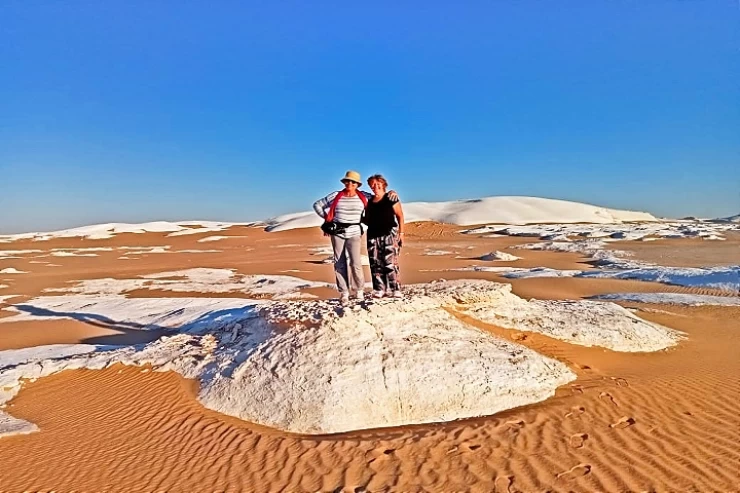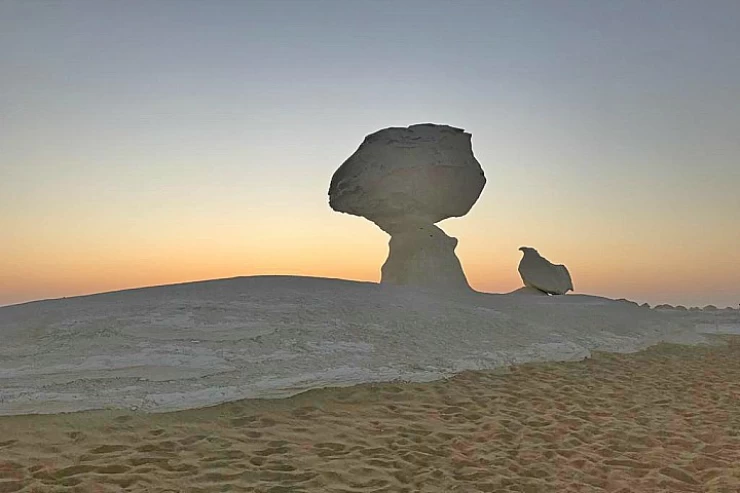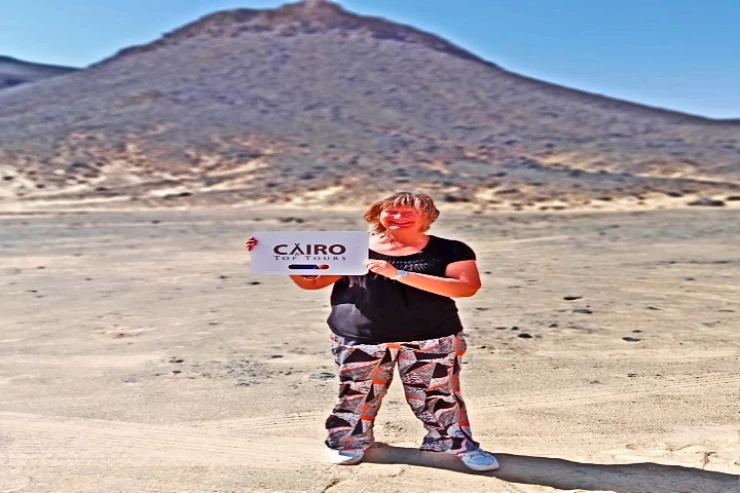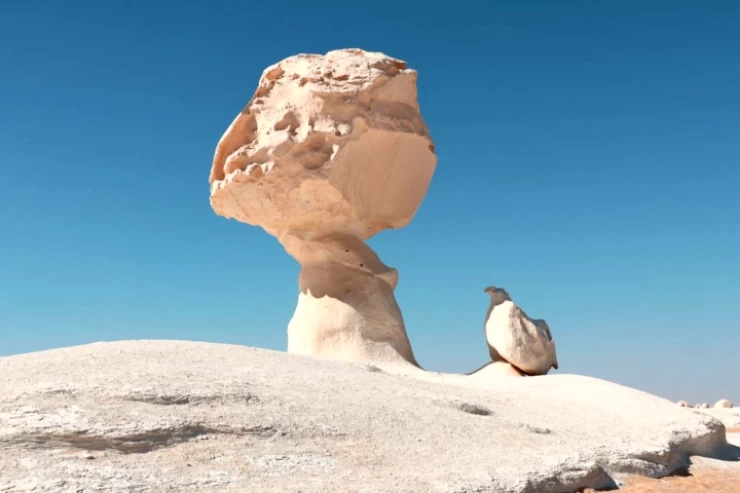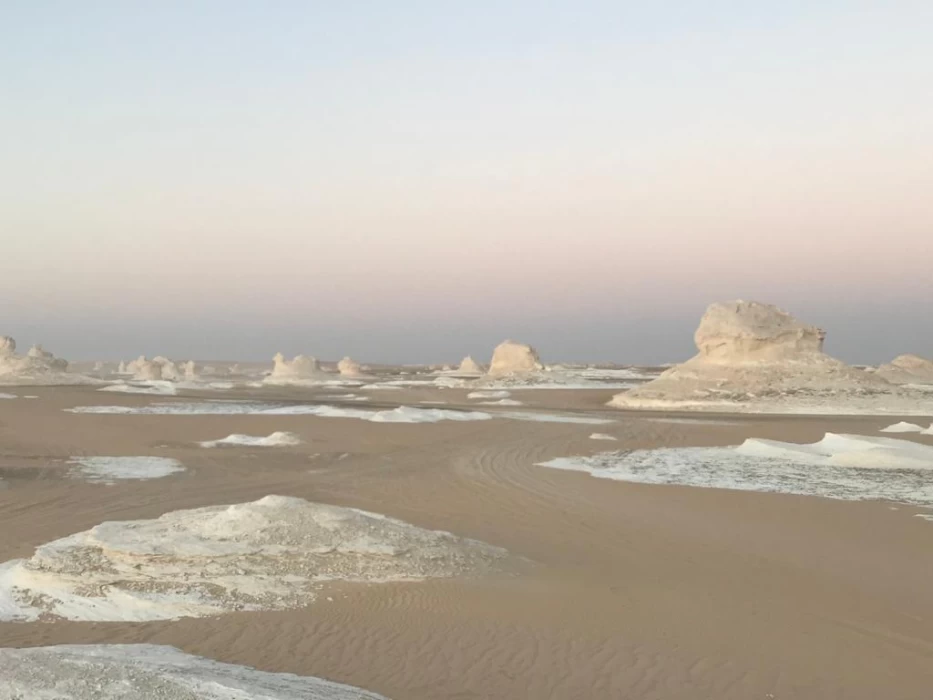
The White Desert
White Desert
It is called the White Desert because of its snow-white chalk surface dotted with geologic units in the form of wind-sculpted mushrooms and chalk columns formed by wind-sculpting and thus giving rise to a distinctive geologic condition in the region.
The reserve contains a few desert trees and a herd of rare and threatened wild animals such as the white gazelle and the Arui ram and contains many fossils that are millions of years old.
The destination will take you back in time, centuries back, way back thousands of years ago, and you will think of those days when it was windy a lot in those days, giving rise to the development of these rock formations.
White Desert Reserve amazes visitors with its unique beauty, characteristic of the formation of geological structures in the form of columns and snow-white chalk rocks and for a set of strange tombs and caves and prehistoric fossils from prehistoric times.
Apart from sightseeing, camping, and soaking in the tranquility of nature, the tourist package deal includes a variety of events and activities, including barbecues, oasis traditional food, charcoal tea, and cultural activities portraying the history of the dwellers of the oasis.
The tourists enjoy gazing at the gorgeous and ravishing white rock formations, as well as at awe-inspiring sunrises and sunsets above the snow-white reserve landscape.
Glancing at the white rocks whose special and secretive forms are the most unique aspect inviting tourists to White Desert Reserve of the New Valley, because the rocks take surprisingly carved forms and make people perceive that they are statues done by a skilled sculptor, and the most amazing thing is that the carved rocks have gotten names based on their unique sculpting forms.
Among the surprising carved rocks is the Camel Rock, so called because it looks like a camel, and listed as one of the most visible tourist spots in the reserve, and the Mushroom Rock, listed as one of the reserve's favorite among tourists.
Visiting Al-Jarrah Cave and seeing Crystal Mountain is a must-have aspect of the White Desert tourism experience. Al-Jarrah Cave offers tourists the chance to see amazing rock structures and natural landscapes, and Crystal Mountain amazes tourists with its beauty and natural gleam.
Night visitors enjoy beholding vast numbers of stars in the sky, as the White Desert provides a serene environment for star-gazing, looking at the sky, and enjoying the beauty of the universe in complete peace.
The tour schedule of White Desert Reserve also includes a visit to the fantastic "Ain El Sarou," an underground water spring whose water flows freely when any animal or human being approaches it and evaporates if left alone, thus a wonderful and exciting place to visit and explore for travelers and visitors.
The most recognizable aspect of Live Out is Chalk Formations; these sculptures are found scattered all over the country. Some of the most popular formations would be Chicken and Mushroom and the Sphinx.
Crystal Mountain: Just a short driving distance from the White Desert, it includes bright, shining quartz crystals in the rock, thus giving an additional aspect to geological wonders.
The Desert Flora and Fauna: The White Desert presents unusual life, such as desert foxes and tough plant species, despite the wilderness it composes.
The White Desert has a truly magical effect as it’s one of the more recently declared protectorates of Egypt and is located totally within the Farafra area. White Desert National Park is considered one of the most important tourist destinations for Egypt's Desert Safari adventure. It is without a doubt Egypt's most well-known desert destination, and for good reason. In every desert on the planet, the number of strange and magnificent wind-carved rock formations shaped like huge mushrooms or stones is unparalleled. The important question is, Where is the White Desert? Farafra Oasis is closer to this 300-kilometer protectorate than Bahariya, although it has a smaller selection of tours and safaris. It is, however, the ideal starting place for an overnight trip into the endless whiteness.
A gloomy and, at the same time, extremely attractive landscape seems supernatural. Tourists come to admire it from all over the world. The Bahariya Oasis and another prominent natural attraction of Egypt, the White Desert, are located near the Black Desert. The uninhabited and absolutely lifeless desert attracts not only curious tourists but also professional photographers. At certain times of the day, you can create unique images, since the play of shadows forms an even more amazing scenario.
The name of White Desert Farafra Oasis comes from the layer of chalk and limestone that partially covers the landscape. This is the vestige of a time when this area, today arid, was located under the sea, there are tens of millions of years. You can always find remains of sea urchins, shells, and even coral reefs near the Libyan desert.
Sleeping under the stars (or rather under millions of stars!), in absolute silence, in the heart of a seemingly infinite space, provides an unreal sensation. Walking in the sand or stones, crossing a dry oasis, drinking tea in a lost spring in the middle of nowhere, and discovering fossils of shells are somewhere else apart from this planet. And for those who like the adventurous atmosphere, all this can be done by a 4x4 Jeep vehicle.







